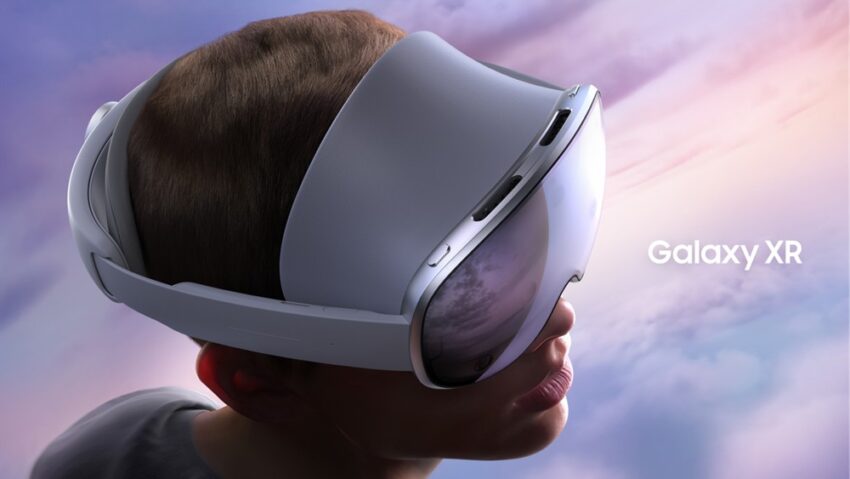
samsung galaxy xr is the first android The Samsung Galaxy XR headset marks a significant milestone as the first Android XR device, now available for pre-order at a price of $1,800.
samsung galaxy xr is the first android
Introduction to the Galaxy XR
The Galaxy XR headset represents a new chapter in the evolution of virtual reality (VR) and augmented reality (AR) technologies. Following two previous attempts by Google to integrate Android into wearable technology, this latest effort is backed by advancements in artificial intelligence and a strategic partnership with Samsung. The Galaxy XR aims to leverage these innovations to provide a more immersive experience for users.
Key Features of the Galaxy XR
Design and Build
The Galaxy XR features a fully enclosed design that is reminiscent of the Apple Vision Pro, complete with a battery pack connected via a cable. This design choice allows for a more streamlined user experience, as it eliminates the need for external controllers, which can often complicate the VR experience. Instead, the headset relies on advanced sensors and cameras to track user movements and gestures, providing a more intuitive interaction with virtual environments.
Display Technology
One of the standout features of the Galaxy XR is its display technology. The headset is equipped with dual Micro-OLED displays, each boasting a resolution of 3,552 x 3,840 pixels. This results in a total pixel count that surpasses that of the Apple Vision Pro and is nearly three times that of Meta’s Quest 3. The impressive resolution allows for a more detailed and immersive visual experience, making it suitable for both gaming and productivity applications.
Field of View and Refresh Rate
The Galaxy XR offers a 109-degree field of view, which enhances the sense of immersion by allowing users to experience a wider visual landscape. The displays can refresh at rates of up to 90Hz, although the default setting is 72Hz to conserve battery life. This balance between performance and power efficiency is crucial for extended use, particularly in applications that require prolonged engagement.
Hardware Specifications
Under the hood, the Galaxy XR is powered by the Snapdragon XR2+ Gen 2 processor, a slightly upgraded version of the chip found in Meta’s Quest 3 headset. This processor features six CPU cores and an Adreno GPU capable of supporting dual 4.3K displays. The headset also comes with 16GB of RAM and 256GB of internal storage, providing ample resources for running demanding applications and storing content.
Pricing and Availability
The Galaxy XR is currently available for pre-order at a retail price of $1,800. While this price point positions the headset in the premium segment of the market, it reflects the advanced technology and features that Samsung has integrated into the device. The absence of controllers may also be seen as a cost-saving measure, although it remains to be seen how this will affect user adoption and overall experience.
Market Context and Implications
The launch of the Galaxy XR comes at a time when the XR market is experiencing renewed interest, driven by advancements in hardware and software. The partnership between Google and Samsung signifies a commitment to making Android a viable platform for immersive experiences. This is particularly important as competition in the XR space heats up, with established players like Meta and Apple leading the charge.
Comparison with Competitors
In the current landscape, the Galaxy XR faces competition from several notable devices:
- Apple Vision Pro: Known for its premium build quality and advanced features, the Vision Pro is a direct competitor in the high-end market.
- Meta Quest 3: A more affordable option that has garnered attention for its solid performance and user-friendly interface.
- HTC Vive XR Elite: Another contender that focuses on delivering high-quality VR experiences, particularly for gaming.
Each of these devices has its own strengths and weaknesses, making the choice for consumers increasingly complex. The Galaxy XR aims to carve out its niche by offering a unique combination of features, particularly in display technology and processing power.
Stakeholder Reactions
The announcement of the Galaxy XR has elicited a range of reactions from industry stakeholders, including developers, analysts, and consumers. Many are optimistic about the potential of the new headset, particularly given Samsung’s reputation for quality hardware and Google’s backing.
Developer Community
Developers are particularly interested in the new Android XR platform, which promises to open up new avenues for app development. The integration of AI capabilities is expected to enhance user experiences, allowing for more personalized and adaptive applications. This could lead to a surge in content creation specifically tailored for the Galaxy XR, further enriching the ecosystem.
Consumer Sentiment
Consumer reactions have been mixed, with some expressing excitement over the advanced features and potential applications of the headset. However, the high price point has raised concerns about accessibility and whether the device will attract a broad user base. Many potential buyers are weighing the benefits of the Galaxy XR against the offerings of competing devices, particularly in terms of value for money.
Future Prospects
Looking ahead, the Galaxy XR could play a pivotal role in shaping the future of XR technology. As more consumers adopt these devices, the demand for high-quality content and applications will likely increase. Samsung’s commitment to the Android XR platform may lead to further innovations and partnerships, potentially expanding the capabilities of the headset.
Potential for Software Updates
One of the advantages of launching the Galaxy XR on the Android platform is the potential for regular software updates. This could include enhancements to existing features, new applications, and improvements based on user feedback. Such updates are crucial for maintaining user engagement and ensuring that the device remains competitive in a rapidly evolving market.
Impact on the XR Ecosystem
The introduction of the Galaxy XR could also have broader implications for the XR ecosystem. As more manufacturers enter the market with their own devices, competition will likely drive innovation and lower prices. This could make XR technology more accessible to a wider audience, ultimately accelerating its adoption across various sectors, including gaming, education, and remote work.
Conclusion
The Samsung Galaxy XR headset represents a significant advancement in the realm of Android-based XR technology. With its impressive hardware specifications, innovative design, and the backing of major industry players, it has the potential to make a lasting impact on the market. As consumers begin to explore the capabilities of this new device, the future of XR technology looks promising, albeit with challenges that will need to be addressed in the coming months and years.
Source: Original report
Was this helpful?
Last Modified: October 23, 2025 at 5:38 am
2 views















